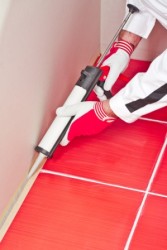Your Florida Home: Sealing Begins With The Right Caulk
We’ve talked about the importance of sealing air leaks in your South Florida home, but do you really understand how to go about doing it? When you know what you’re doing, choosing the right caulk and applying it properly is one of the simplest and most cost-efficient ways to improve your home comfort while lowering your cooling and heating costs. To help you successfully complete this project, here’s a quick guide to choosing and using the right caulk.
Purchasing the right caulk
As you purchase your caulk, you will first need to decide how much you’ll need. You’ll need approximately one half of a cartridge for each window or door that you plan to seal. Additionally, you will need about four cartridges for the foundation sill of an average-sized home.
The next step is to decide which type of caulk to use for your project. Your best bet for sealing leaks around windows or doors that are regularly exposed to sunlight is to use a household silicone caulking compound. Silicone makes the caulk more durable against the elements. For larger cracks either indoors or outside, use a polyurethane expandable foam spray. This compound has a high expansion rate that makes it ideal for sealing big or oddly shaped leaks. Your HVAC contractor can help you find the right caulk for your needs throughout the home.
How to properly apply caulk
Before you set about applying your caulk, have your HVAC professional evaluate your home’s ventilation needs so that you don’t overdo it. Once ready, be sure that all surfaces are clean and dry for maximum adhesion and to avoid sealing in moisture. Apply your caulk evenly at a 45-degree angle in order to seal off the leak entirely. Any oozing caulk can be directed back into place with a putty knife.
For more expert advice on choosing the right caulk, contact the professionals at NisAir Air Conditioning & Heating. We are proud to serve residents of Martin, Palm Beach, St. Lucie and Indian River counties.

